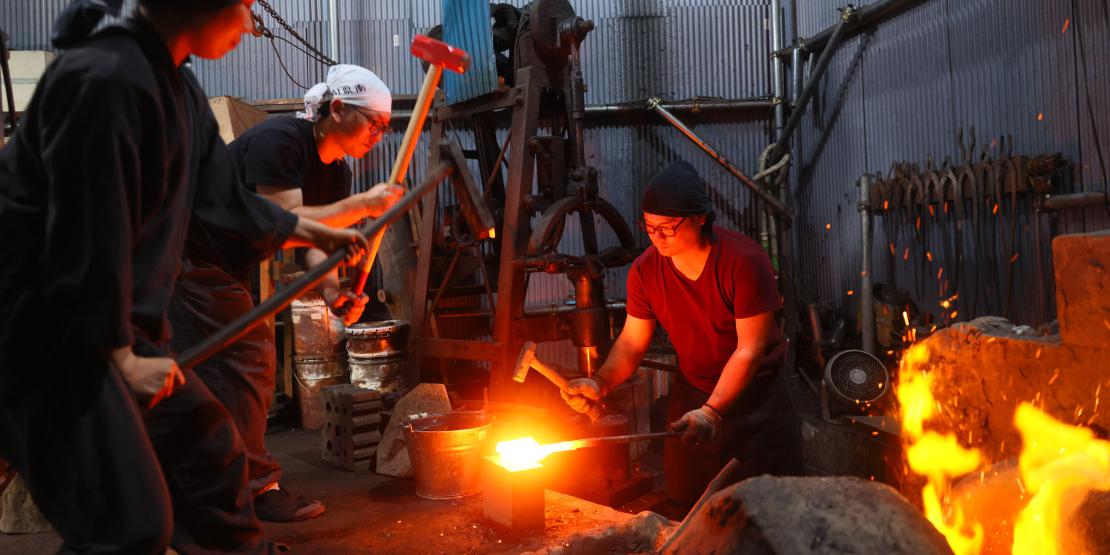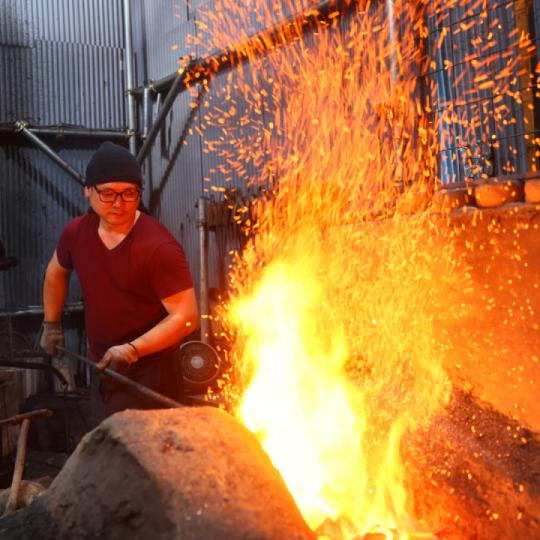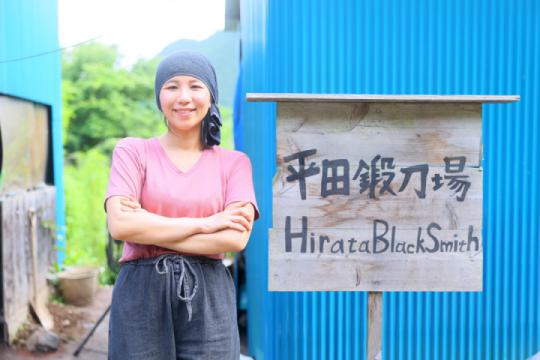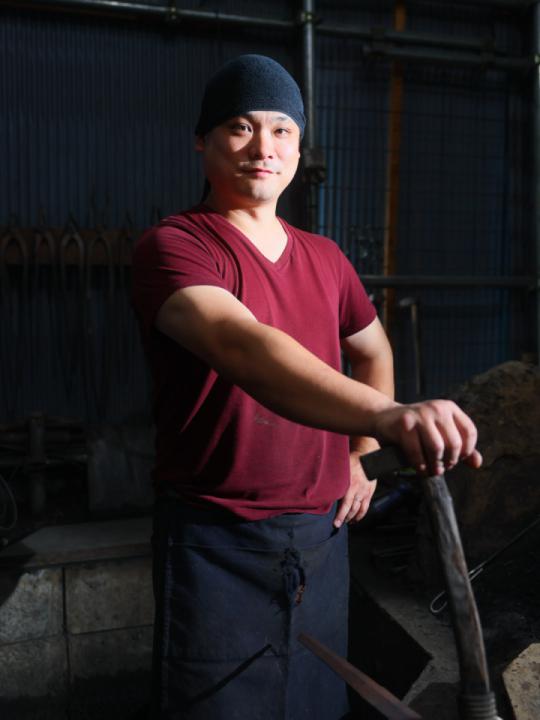
Nestled in the rich natural surroundings of Ome City, Tokyo, stands the Hirata Swordsmith Workshop run by a husband-and-wife duo.
Hirata Swordsmith Workshop is one of a tiny number of Japanese forges producing their own traditional “tamahagane” steel from iron sand to craft swords in house.
Experience the charm of Japan and Japanese swords

Sukehira Hirata, the husband, is a skilled swordsmith, while his wife, Nodoka, is a rare craftsperson known as a "Murage," responsible for producing tamahagane from iron sand. Their workshop has even contributed sound effects to the popular anime "Demon Slayer: Kimetsu no Yaiba."
Tamahagane is a high-purity steel produced using Japan's traditional ironmaking method. It is made by melting iron sand in a special furnace called a tatara to extract iron.
While most Japanese swordsmiths use the same tamahagane supplied by a limited external source, the Hirata Swordsmith Workshop crafts its own tamahagane in-house, allowing them to create truly one-of-a-kind blades.
The World’s Only Female Murage furnace master: Nodoka Hirata

Until the early modern period, ironmaking techniques were passed down through a highly secretive tradition (isshisōden tradition), in which only a single chosen heir—usually a child or disciple—was taught the full knowledge and the secret of the craft.
Nodoka Hirata learned traditional swordsmithing techniques from her husband, Sukehira, a Japanese swordsmith (toko), and mastered the intricate tatara steelmaking process in just a few years.
Tamahagane Steel changes its expression like a human being. The type of iron sand and charcoal, the day's temperature, the heat of the flames—even artisan’s physical condition—can all affect it.
“Because it's made from natural materials, no two pieces of tamahagane are ever exactly the same. The skill of the craftsperson also affects its quality. That variability is part of what makes traditional tatara steelmaking so captivating and rewarding," Nodoka says.
A Passion for Steel: Sukehira Hirata

Driven by a passion for swordsmithing, Sukehira Hirata relocated to Okayama Prefecture, dedicating 13 years to mastering the arts of steelmaking and sword forging.
Through the martial art of kendo, Sukehira came to understand the essence of Japanese culture expressed in the phrase, “begin with courtesy and end with courtesy.” Moved by this philosophy, he developed a desire to work in a field that reflects the spirit of Japanese culture after graduating from high school.
Later, when he saw an exhibition of old Japanese swords (koto), he was deeply impressed by their refined beauty—so perfect it was hard to believe they were made by human hands—and by the lifelike vitality they seemed to possess, as if they were natural objects. This experience led him to pursue the path of a swordsmith.
"Blades made from Japan’s iron sand are incredibly sharp, maintain their edge longer, and are easy to sharpen—making them very practical for human use," he says.
"Ancient swords (koto) have qualities that modern smiths still cannot fully replicate. There is so much left to study, and that in itself is part of the allure."
Why not experience the charm of Japanese blades— born from the blessings of nature, crafted with carefully selected natural materials and the exceptional skills of master artisans, combining tradition with practicality?